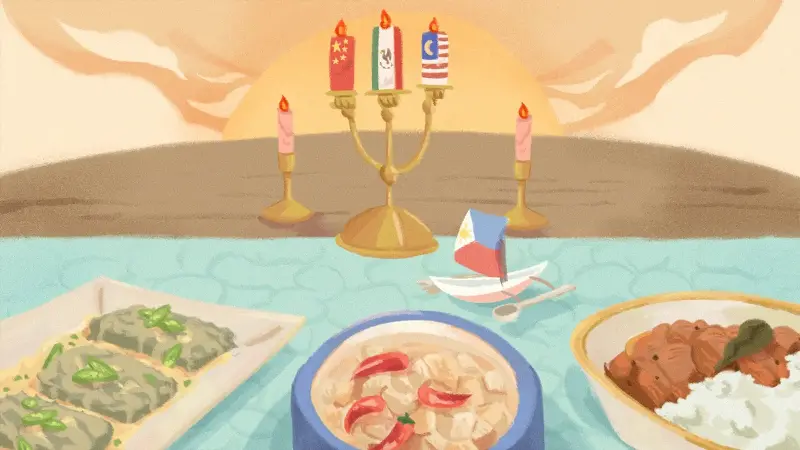
A trowel (/ˈtraʊ.əl/), in the hands of an archaeologist, is like a trusty sidekick – a tiny, yet mighty, instrument that uncovers ancient secrets, one well-placed scoop at a time. It’s the Sherlock Holmes of the excavation site, revealing clues about the past with every delicate swipe.
The arrival of the Michelin Guide in the Philippines has generated attention and discussion. On one hand, some take pride in seeing Filipino chefs and restaurants included in an international framework that evaluates culinary practices and standards. On the other, some reject the listing altogether, viewing it as an external measure that may not align with local contexts and values.
The Guide draws visibility to Filipino cuisine and positions it within global systems of recognition, while also introducing new expectations regarding technique, consistency, and presentation. These shifts shape how local chefs engage with both international and local dining communities.
As my friend and UC Berkeley professor Leloy Claudio wrote, the antidote to the Michelin Guide is not rejection. Recognition should not eclipse how we tell our own food stories. The Guide, based on European fine-dining traditions, can only capture part of what Filipino cuisine is. As Leloy notes, “We will talk to the world, but we will also talk, write, cook, and eat for ourselves.”
True culinary pride lies in defining excellence on our own terms, honoring the everyday tables, carinderias, and kitchens that shape our collective taste and history.
Authenticity belongs to that same conversation. When Filipinos argue about what counts as authentic food, the question hides a deeper problem. Authentic according to which century? If we take food as evidence, our plates uncover a truth that might make some uncomfortable. Many of what we call Filipino today were imported, borrowed, adapted, or reinvented. Food is a real archive of the Filipino past, and it remembers what our textbooks and politicians prefer to forget.
Take away sili, kamatis, and mani, and the so-called national menu collapses. Laing without heat, ginisang munggo without tomato, and kare-kare without peanuts sound like culinary blasphemy, but they are historically accurate. Those ingredients are Mexican, carried here by the Manila-Acapulco galleon trade that connected Asia and the Americas for 250 years. Every time we sip sinigang or spread peanut butter, we taste the dynamics of colonialism and global trade. The sili in your Bicol Express is a 16th-century immigrant.
Our plates are historical documents disguised as lunch. Ingredients track the movement of empires and ordinary people alike. Recipes record adaptation and resistance. Flavors preserve memories of migration. Long before there was a Philippine nation, the kitchen was already a global experiment.
Even our most sacred assumption — that rice defines us — needs rethinking. Archaeology tells a different story. For most of our history, people in the islands depended on taro (gabi), yam (ube), and banana as staple foods. Rice arrived relatively late and only became central a few centuries ago. The idea that it has always been our defining grain is a myth shaped by colonial narratives and modern nostalgia. Long before rice took over the Filipino imagination, our ancestors were sustained by crops that thrived in these islands long before the plow. The notion of rice as eternal Filipino heritage, then, is less ancestral memory than colonial aftertaste.
The kitchen, however, remembers better than any archive. Linapay, pinangat, and natong — dishes built around taro — are proof of older food systems that survived empire and modernization, and perhaps, culinary snobbery.
Even before Spain arrived, the archipelago was never isolated. Pancit and toyo trace Chinese roots. Spices illustrate ancient Malay and Arab exchanges. Filipino food was international long before anyone used the term fusion cuisine. The evidence sits beside the patis and suka in every household.
Consider Bicol’s love for sili. The region’s entire identity is wrapped around heat, yet chili peppers are not Asian. They are Mexican. They arrived in the 1500s, and Bicolanos made them central to who they are. That act of culinary adoption is both historical and radical. It proves that Filipino food is not about origin. It is about transformation. The same pattern runs through our kitchens. Sinigang once had no tomato. Champorado came from Mexican cacao. Lugaw and goto evolved from Chinese techniques. Sugarcane moved through old maritime routes. The idea of a pure Filipino cuisine is not nationalism. It is fiction.
But that fiction persists because it feels safe. Purity is comforting. Mixture sounds messy. Yet our entire history is a story of mixing. Filipino food has never been static. It changes with every encounter and every generation that dares to edit the recipe.
Food can do what most academic writing cannot. It sneaks history onto your tongue. A bowl of kadyos retells the story of crops crossing oceans. A cup of tablea revives the galleon trade. A serving of laing connects Bicol to Mexico through a vine and a spice. Meals become archives that colonial narratives could not erase. The kitchen keeps the records that institutions ignored.
Authenticity, however, is overrated. Identity is what matters now. Authenticity is what we make of it through our lived experiences and our choices about what to preserve and what to change.
Still, we need to remember that both we and our food are the products of thousands of years of contact, trade, interaction, and exchange. To deny that is to diminish who we are.
Our food history is not one of purity but of movement and negotiation. We are a people who have always borrowed and improvised the foreign into something our own. That is not dilution. It is mastery. Every time we cook, we edit history and serve it back with vinegar and spice.
Food is our most honest autobiography. It tells the story of who we have been and how we keep changing. It proves that culture, like a good stew, is never finished. It just keeps simmering. – Rappler.com
Stephen B. Acabado is professor of anthropology at the University of California-Los Angeles. He directs the Ifugao and Bicol Archaeological Projects, research programs that engage community stakeholders. He grew up in Tinambac, Camarines Sur.
